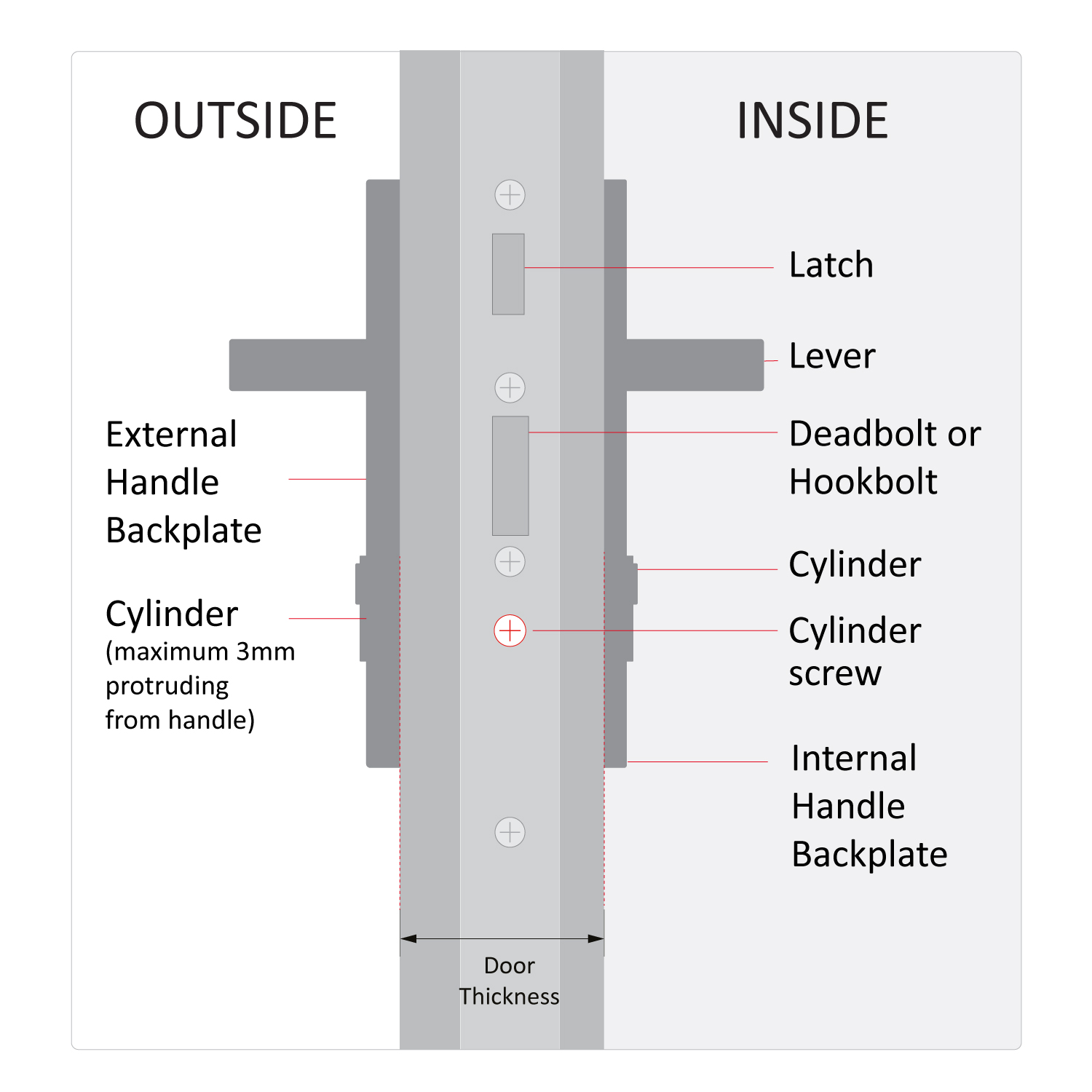How to fit a door handle
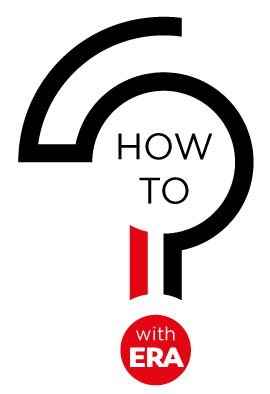
Door handles are a key part of the door, not only in terms of functionality but in terms of design and finish. In this handy how-to guide from ERA, we’ll explain how to fit a typical external door handle that is used with a multi-point lock.
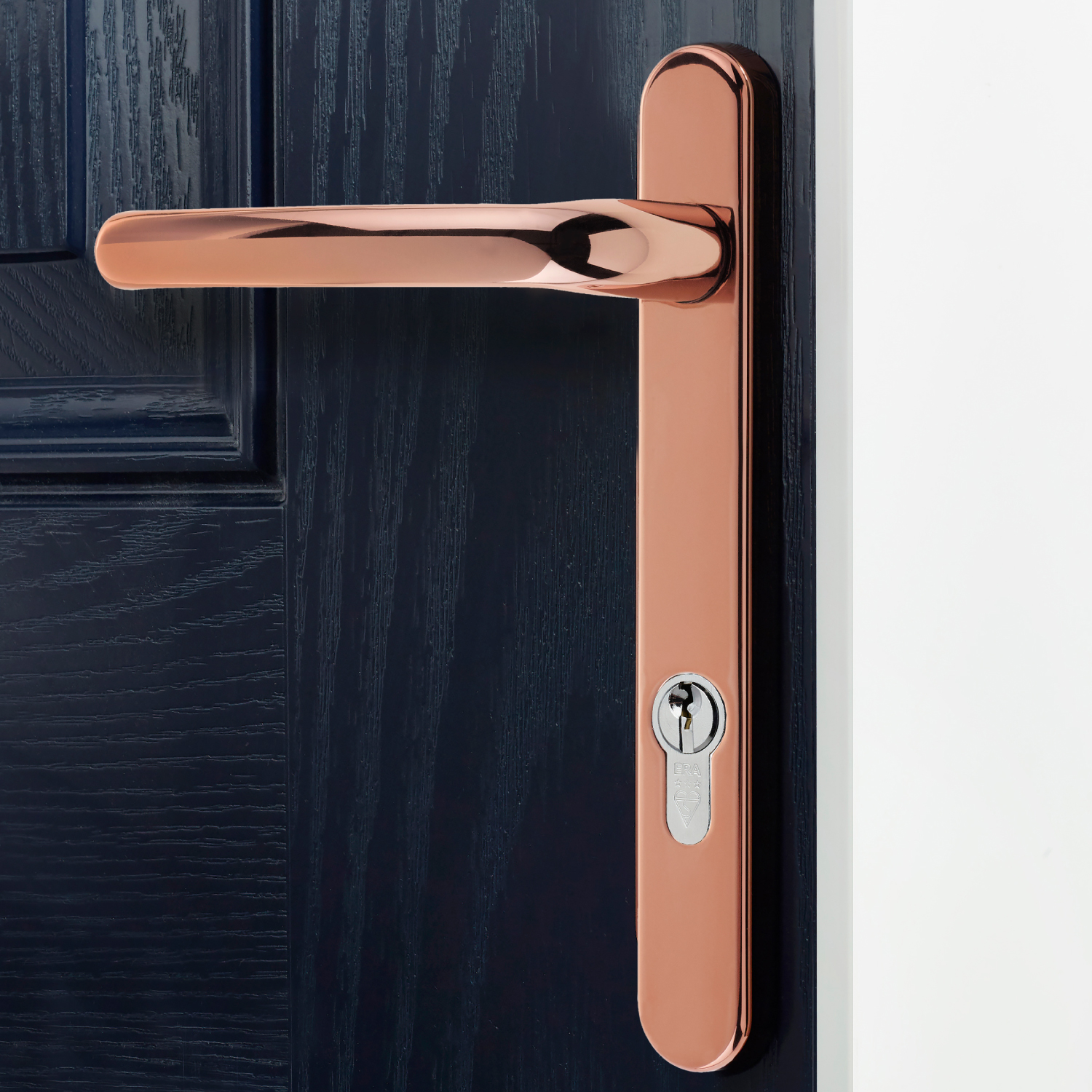
The installation guide will cover a standard lever/ lever external door handle with an inline spindle. Some door locks do require an offset handle (the spindle on the external backplate is offset to the spindle position on the internal backplate), please refer to the individual fitting instructions for those handles. For a lever/ pad (or split spindle) application, please also follow the specific handle instructions.
The Fab&Fix door handle range from ERA has a wide variety of external door handles available in an array of beautiful finishes to suit any style of door.
Handles to suit the door material and door size (thickness)
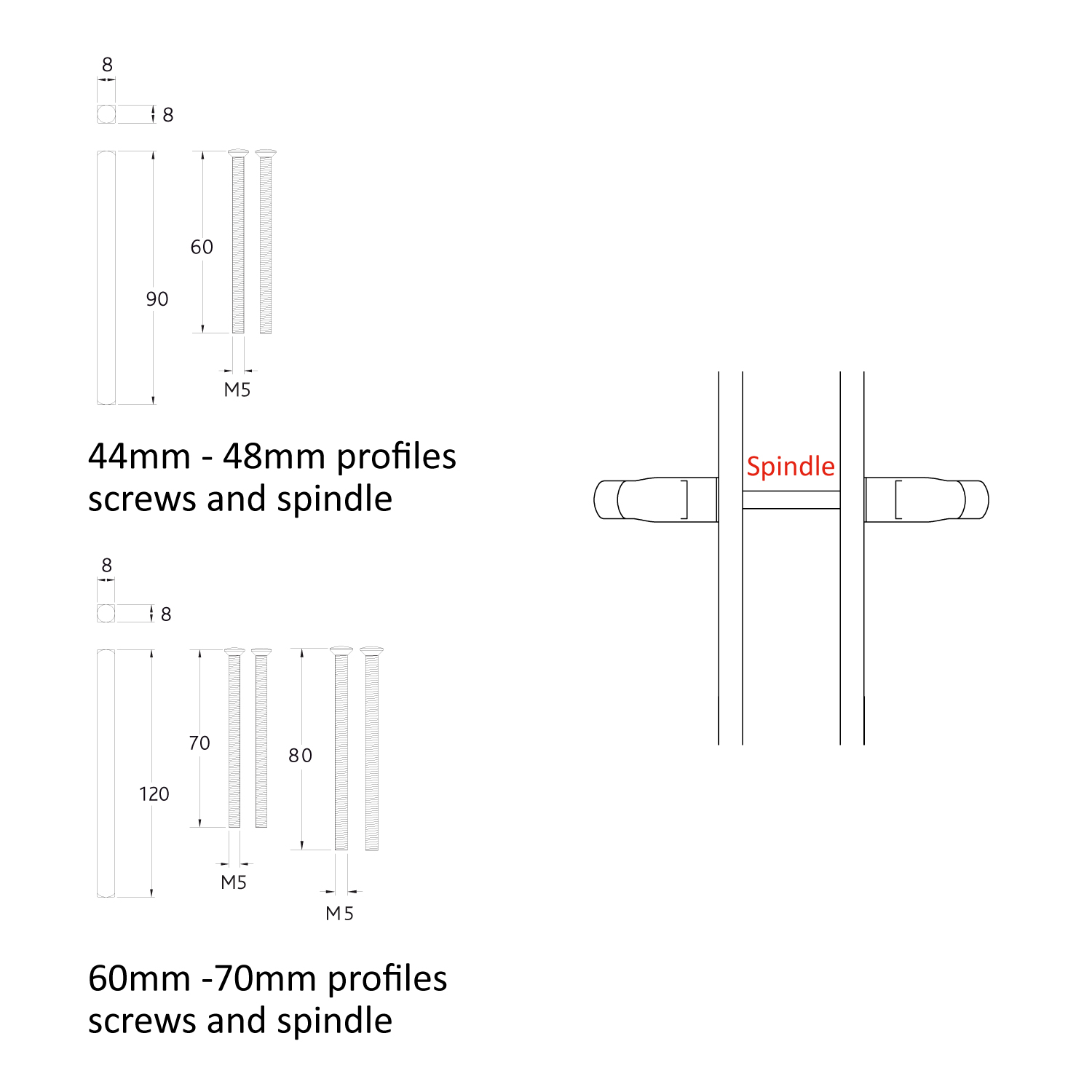
For different door materials, it’s common to need different screw and spindle lengths to accompany the handle (these are normally provided in the handle pack). You may either be able to purchase a handle pack to suit the relevant door thickness e.g., 44mm or 70mm or the handle pack may contain screws and spindle options to accommodate different doors thicknesses, or you need to purchase a screw pack separately (it is worth checking this before ordering).
Generally, for timber and composite doors a 44mm screw and spindle pack is used, and for 60-70mm PVCu doors the 70mm screw and spindle pack would be suitable. For some applications, screws and spindle may need to be trimmed to size. Most UK lever door handles for external doors use an 8mm square drive spindle, but again it is worth checking this is suitable for the application before purchase.
How to measure a door handle
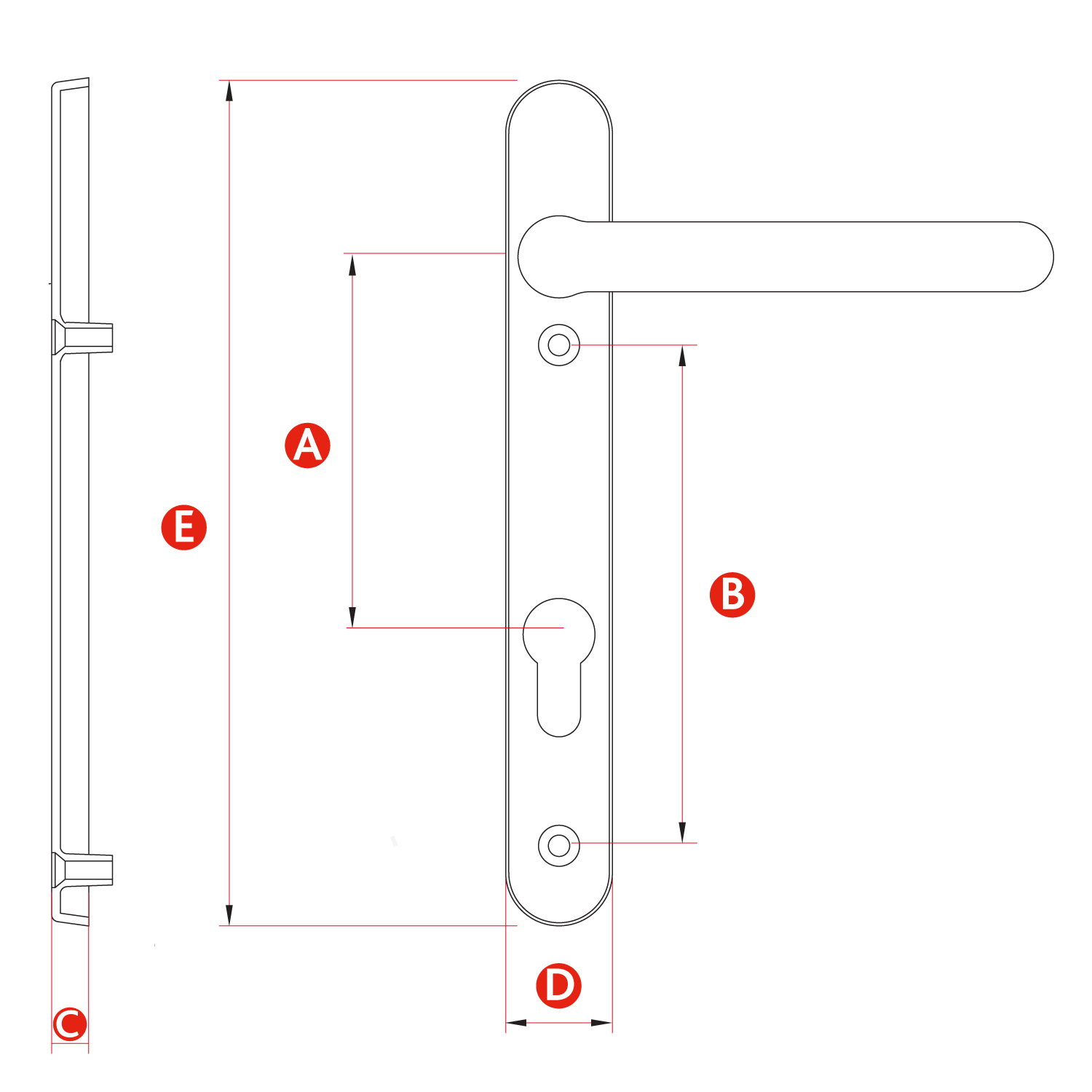 When fitting an external door handle there are a few measurements required to ensure that you purchase the correct handle. The four key dimensions are shown in the diagram below:
When fitting an external door handle there are a few measurements required to ensure that you purchase the correct handle. The four key dimensions are shown in the diagram below:
Dimension A: Centre (92mm Pz)
Measured from the centre of the keyhole/ cylinder to the centre of the spindle hole (centre of the lever). Most UK door locks use a 92mm Pz handle but some older locks may require a 68mm Pz or other.
Dimension B: Screw holes
Measured from the centre of the bottom screw hole to the centre of the top screw hole. This ensures the handle screws won’t clash with the lock’s gearboxes when fitted.
Dimension C: Backplate depth
The thickness of the backplate when protruding from the door. It’s helpful to understand this to ensure if you are also adding or changing a cylinder, the depth of the backplate is considered. So, the cylinder doesn’t protrude too much from the edge of the handle backplate once installed (maximum 3mm).
Dimension D: Backplate width
Width of the handle backplate. Some applications may need a narrower width to fit on the profile section. For replacement applications, you may alternatively need a wider width to cover any existing handle markings.
Dimension E: Backplate Length
The overall length of the handle backplate. Handles that have screw holes at the top and bottom of the backplate are generally referred to as long backplate handles (LBP) and door handles that have the screw hole underneath the handle lever/ pad and then at the bottom of the backplate are generally referred to as short backplate handles (SBP).
Removing an existing door handle
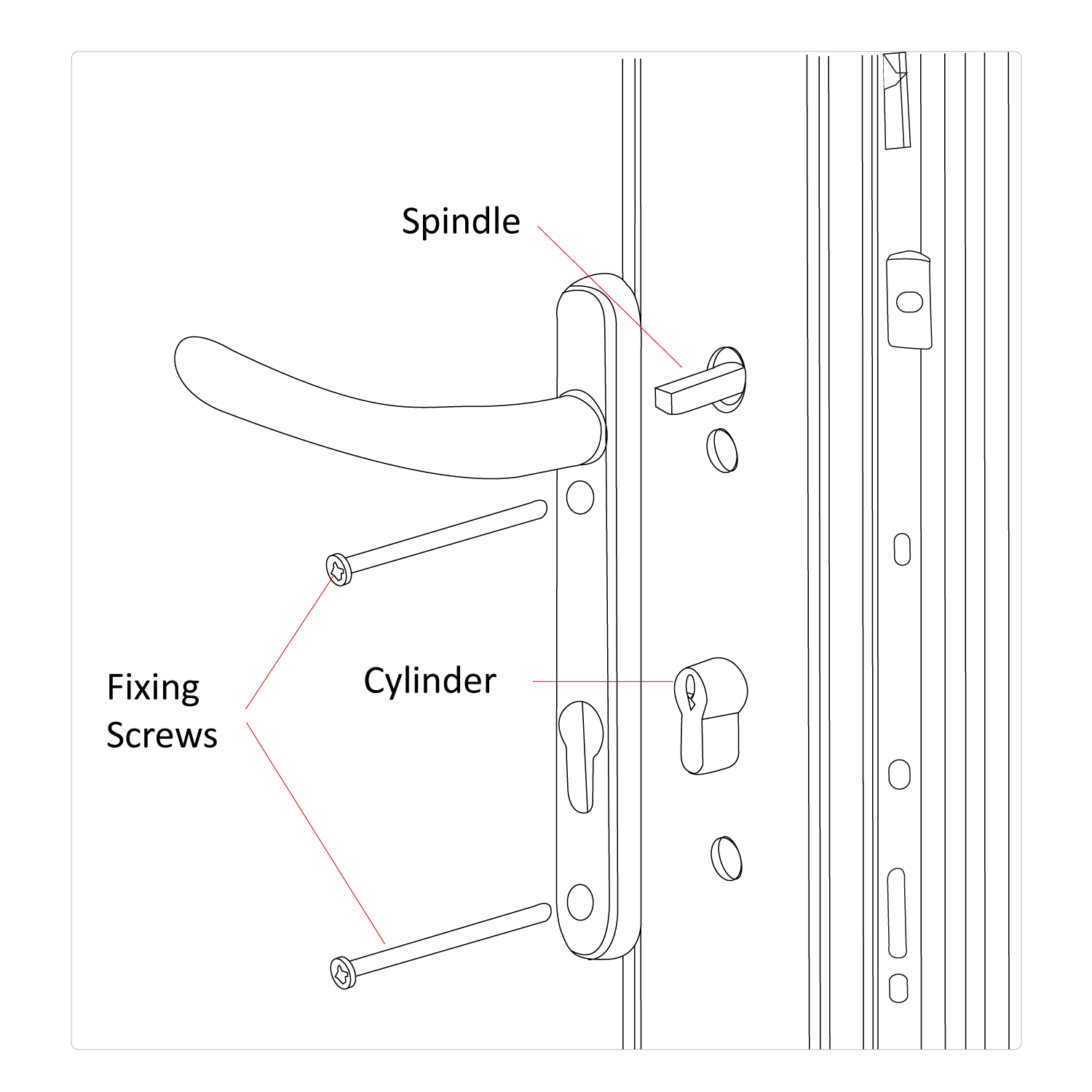 With the door in the open position, place one hand over the external handle and hold it firmly in place. Using the correct type of screwdriver, un-tighten the fixing screws on the internal handle set. With both internal screws loose, the external handle should now be free and can be removed.
With the door in the open position, place one hand over the external handle and hold it firmly in place. Using the correct type of screwdriver, un-tighten the fixing screws on the internal handle set. With both internal screws loose, the external handle should now be free and can be removed.
Once the fixing screws have been removed, the internal handle should be free to be taken off revealing both the cylinder and the 8mm spindle beneath. Screw fixing holes will also be clearly shown. Remove the spindle. At this point it may be useful to measure the length of both the fixing screws and the spindle with a ruler, to ensure that the new handle contains the correct sizes. Crop if necessary.
How to fit a door handle
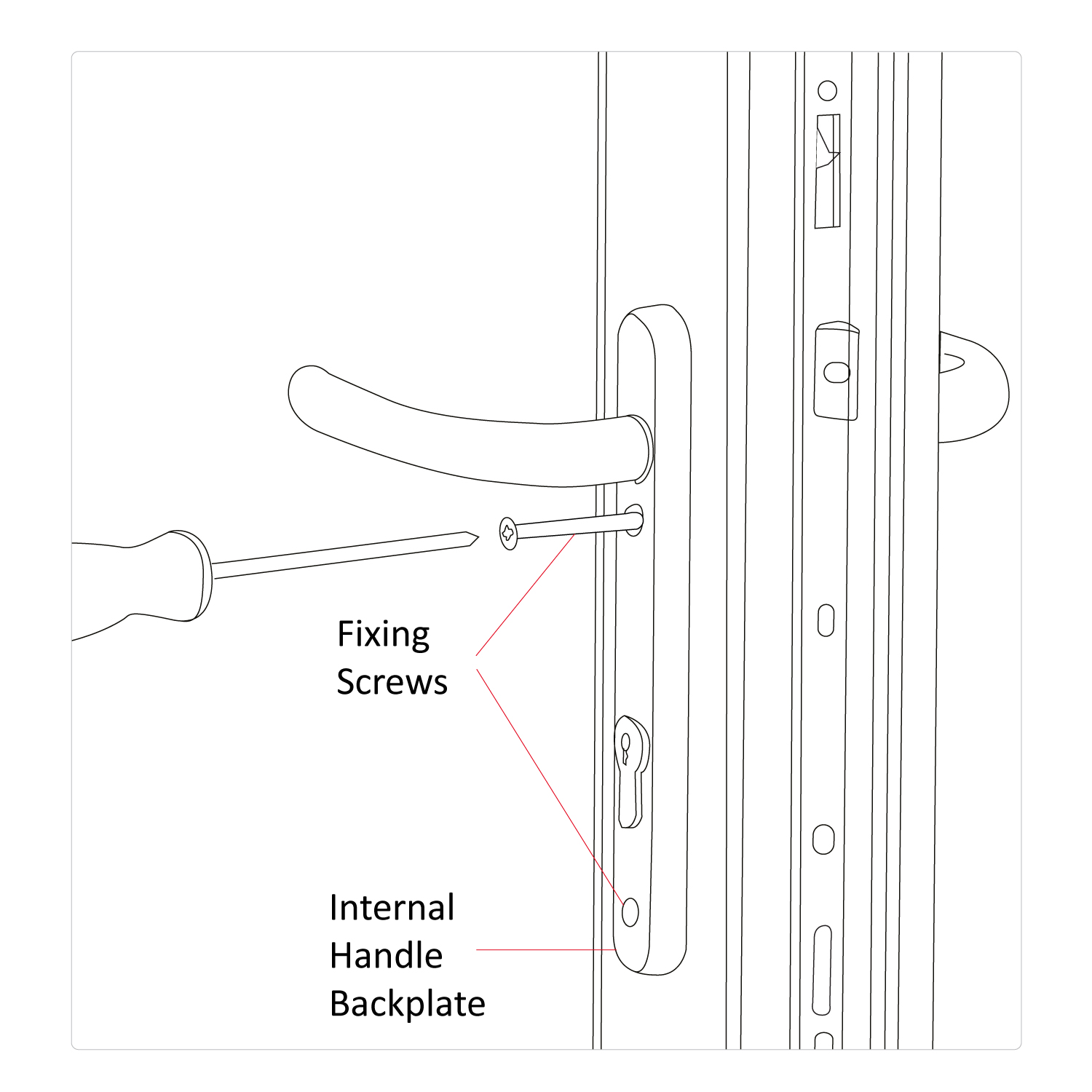 Please check the handle is suitable for the door lock before fitting. If replacing an existing handle, please also check that the dimension between the screw holes mirrors your current handle to ensure a good fit. Please ensure you have the correct screw and spindle pack for the required door installation. Screws and spindles may need to be shortened to suit the door thickness (see above).
Please check the handle is suitable for the door lock before fitting. If replacing an existing handle, please also check that the dimension between the screw holes mirrors your current handle to ensure a good fit. Please ensure you have the correct screw and spindle pack for the required door installation. Screws and spindles may need to be shortened to suit the door thickness (see above).
For fitting to new doors, the door must be prepared correctly. The correct sized holes must be routed into the door to accept the screw bosses, spindle, and cylinder. Please refer to the individual drawing of the handle for dimension details (the handle shown in the diagram is an example, dimensions will differ depending on the handle design and manufacturer).
To fit a door handle you will need:
- Pencil
- Tape Measure / Rule and Square
- Crosshead Screwdriver
- Hacksaw
- Drill (may be required if you need to expand any existing holes or drill new ones)
Using the tape measure or rule and square correctly mark out the holes with the pencil. Check the handle holes on both sides of the door are aligned.
Handles are supplied in two parts – the external half and the internal half. The half that has no screw holes, is the external backplate and should be fitted to the outside of the door. The other half with the two screw holes is for the inside of the door.
Handles may either be handed or non-handed (can be used on left and right hung doors), which needs to be checked before purchase to ensure you have the correct handing (if applicable). To ensure the correct handing, hold the external handle on the door with the lever at a 90° facing towards the hinges.
When the lever is in the correct position, insert the spindle into the back of the external backplate and position it on the door. The handle will need to be located over the cylinder. Please note: If the spindle is not inserted into the handle when the lever is in the correct position it may cause the spring cassette in the internal and external handle to clash.
The internal handle can then be placed on the door. With handles both aligned correctly, using the fixing screws finger tighten initially to test operation. To check operation, push the lever downwards - it should spring back into place when released. Once complete, fully tighten the fixing screws with a screwdriver to secure the handle in place to finish the installation.
Care and Maintenance
For continued protection of a door handles quality finish and appearance, you should routinely clean your external hardware. Moving parts should be lightly lubricated at least twice a year. This procedure is particularly essential if products are used within a 25-mile radius of coastal areas or in proximity to building sites or large industrial areas, where more frequent cleaning may be required to prevent the accumulation of corrosive contaminants.
Terminology
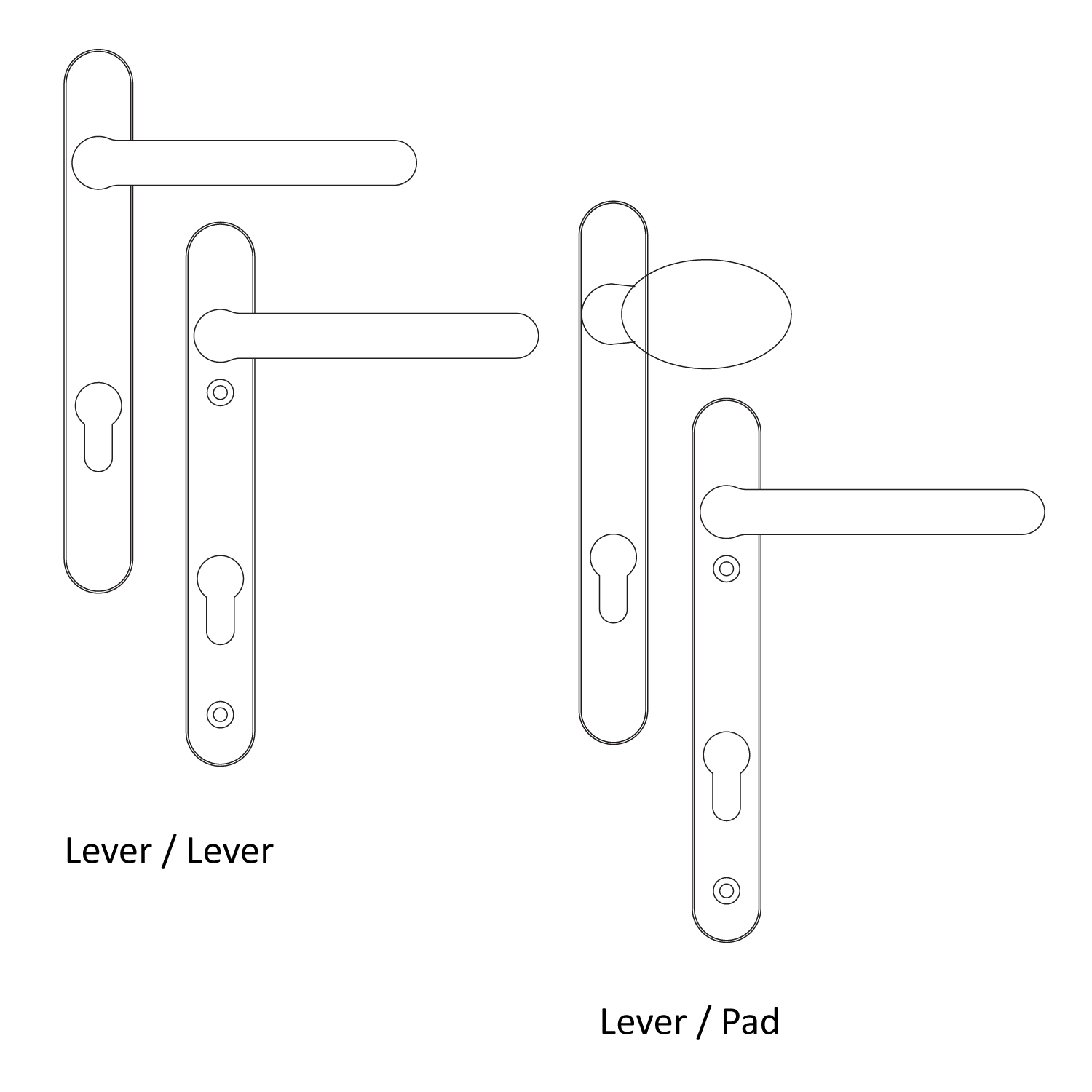 Handle Lever
Handle Lever
The operating element of the handle, that is typically pushed down to open a door. Handles with a lever internal and externally are referred to as Lever/ Lever door handles. Handle designs vary from classic straight levers to decorative swan neck, twist, and contemporary designs. Extended levers can also be used for disability applications to reduce operating forces, for ease of use.
Handle Pad
Typically used with an offset handle or for a split spindle operation (although not exclusively) that is designed to mimic a traditional knob aesthetically, whilst having conventional lever operation internally.
Handle Backplate
The part of the handle that is fixed to the door. Backplates can be face fixed, i.e., the inner and outer handle screw into the face of the door independently, although most modern multi-point locks use bolt through handles, where the outer backplate has a screw lug for receiving the screw fixing from the inner handle.
Spindle
A square section bar, usually 8mm in width, is positioned through the drive of the lock and locates into the handle’s levers or pads. Rotation of the lever/pad rotates the spindle, which in turn operates the drive (follower) of the lock. The length of the spindle is dependent upon the thickness of the door and the depth of the handles lever.
Split Spindle
Rather than a solid design, the spindle is split, which allows the external half of the spindle to operate a nightlatch function, on certain types of locks. Using this method, depressing the handle on the outside of the door does not retract the latch.
Offset Spindle
An alternative mechanism to the split spindle for providing a nightlatch function. An offset lock has two drives, one of which retracts the bolts/ rollers/ hooks and latch, and one that will only retract the bolts and not the latch. Typically, in the UK, the centres are set at 92mm PZ and 62mm Pz. Used in conjunction with a handle where the inner and outer levers or pads are offset, so that the external handle will not retract the latch, the nightlatching function is achieved.
Sprung / Unsprung (Lock Case and Handles)
Multi-point lock gearboxes can be either sprung or unsprung. With a sprung gearbox, the drive mechanism is spring-loaded, so that when the lever is depressed and released, the handle and latch are returned to their original (at rest) position by a spring within the gearbox.
Unsprung gearboxes require the use of a sprung handle (handle sets with spring cassettes) to return the lock drive from the depressed position, thus re-engaging the latch. Spring cassettes are also used in certain handles, where the weight of the lever is too great to allow the integral spring within the gearbox to operate effectively in isolation. This is typically the case with solid cast levers and extended levers for disability use.
Need further help?
If you have any questions, please contact the ERA Expert team who would be happy to assist. Or for further details ERA has a broad range of door handle solutions, both short and long backplate options in a range of finishes. For more information visit eraeverywhere.com
